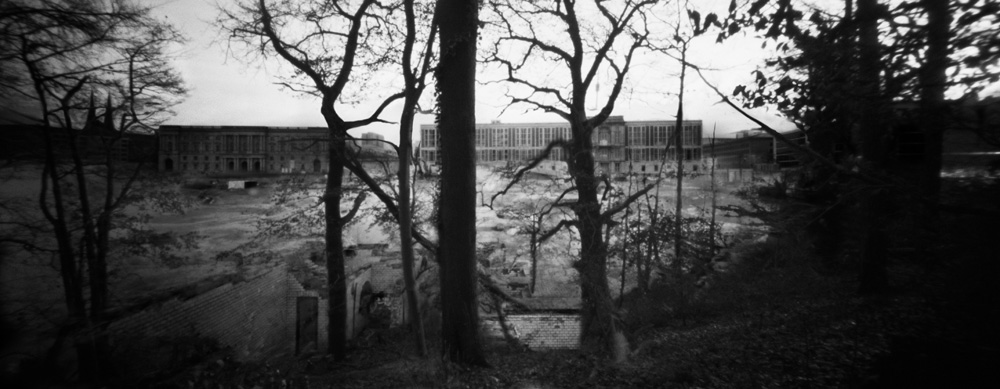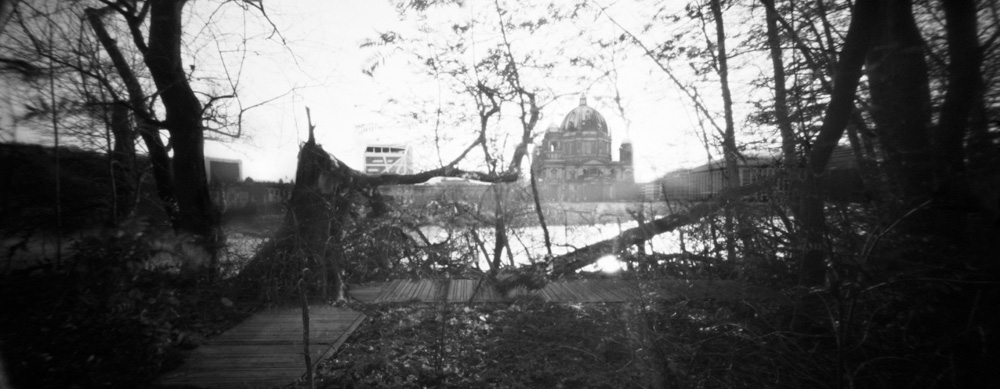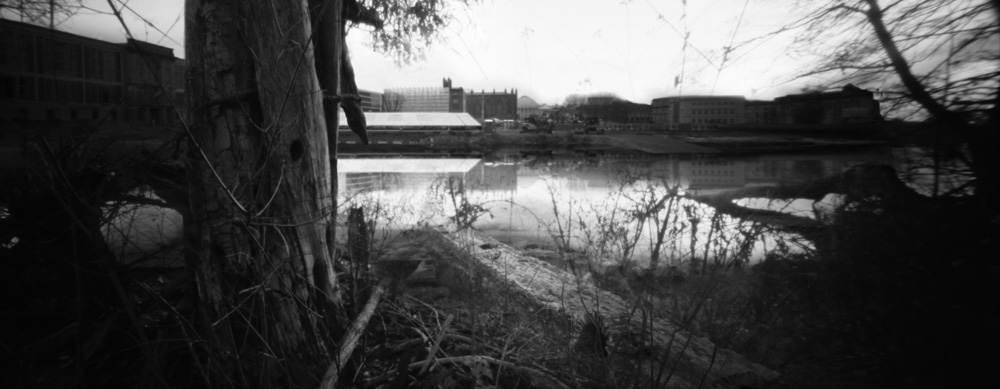Sumpfstadt / Swamptown
2012,
public project [unrealized], Giclée print on Canson Baryta paper, 50 cm × 20 cm, wallpaper 900cm x 300cm
Berlin


 Sumpfstadt or Swamptown refers to a grassed area in Berlin known as Schlossplatz, formerly occupied by the Palast der Republik (Palace of the Republic).
Sumpfstadt or Swamptown refers to a grassed area in Berlin known as Schlossplatz, formerly occupied by the Palast der Republik (Palace of the Republic).
The history of this location alone is a meaningful microcosm of German history. Built on the site of the Berlin City Palace, itself heavily damaged during WWII, it was eventually demolished after the German reunification as a building emblematic of the GDR regime. Despite the Bundestag having already voted for the Prussian-era Berlin City Palace to be rebuilt, the artist proposed that this huge area be returned to its original, prehistorical state – to the marshes. Inaccessible to people, this swampy wetland would be inhabited by wild birds and animals, and would be planted with trees, grasses, rushes, bulrushes, sedges and moss. Carefully designed by lanscape architects, it would recall the mysterious spots familiar from Romantic paintings – with fallen trees and rocks protruding from water. The artist references in particular the paintings of Caspar David Friedrich (1774 – 1840), whose concept of nature was described by the French sculptor David d’Angers (1788–1856) as “the tragedy of landscape”.
Berlin – city in Brandenburg, capital of Germany, traditionally by folk-etymology from Ger. Bär “bear,” but likely from a Slavic source, cf. Old Polabian berl-, birl-“swamp,” in reference to the old city’s location on low, marshy ground along the River Spree. Berlin Etymology Dictionary